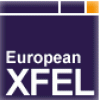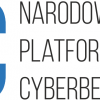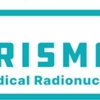Current projects
EuroHPC PL - National Supercomputing Infrastructure for EuroHPC
2021.09.27 14:29
The main aim of the EuroHPC PL project is the deployment of the specialized computing infrastructure. The platform will provide access to hybrid resources such as supercomputers, quantum and neuromorphic accelerators, and dedicated services. The EuroHPC project includes studies of the innovations and solutions to adapt scientific problems and the scientific-oriented software to exascale supercomputers and modern computing architectures.
----
National Cybersecurity Platform
2018.03.14 14:10
----
The PRISMAP project
2021.09.27 11:22
PRISMAP - The European medical isotope programme: Production of high purity isotopes by mass separation.
----
Technical - economic assessment of the High Temperature Reactors (HTR) - Small Modular Reactors (SMR) concepts for industrial and municipal power and heat supplies. A case of Poland.
2020.05.28 12:34
The IAEA - commissioned research project will focus on the assessment of projected energy and heat generation needs in several country/region economic development scenarios with different decarbonization / degassing restrictions. Models of cooperation with local communities on public acceptance of nuclear energy systems will also be the subject of research.
----
SINFONIA
2022.04.20 15:14
The main objectives of the four-year SINFONIA project is to develop novel methodologies and tools that will provide a comprehensive risk appraisal for detrimental effects of radiation exposure on patients, workers, carers and comforters, the public and the environment during the management of patients suspected or diagnosed with lymphoma and brain tumours.
----
SECURE
2023.02.09 8:58
SECURE project aims to make a major contribution to the sustainability of medical isotope production and its safe application in Europe. It is focusing on promising developments in the design of irradiation targets, production routes for existing and new isotopes in nuclear therapy and diagnostics. Isotopes critical in the success of nuclear medicine are selected and research activities such as Cu-64, Ag-111, Tb-161, Lu-177, Re-188, Au-199, Pb-212 and Ac-225 are identified to address some of the major challenges in securing its future availability.
----


















